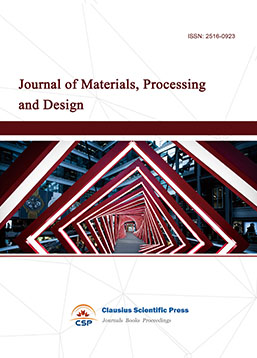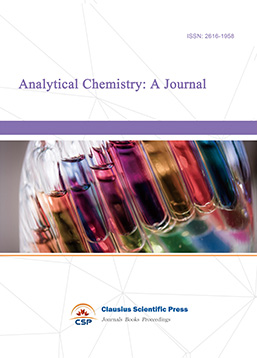The Latest Development of Capillary Electrophoresis Technology in the Separation and Detection of Biological Macromolecules
DOI: 10.23977/mpcr.2023.030103 | Downloads: 26 | Views: 1413
Author(s)
Zixia Feng 1
Affiliation(s)
1 The Hong Kong University of Science and Technology, Hong Kong, 999077, China
Corresponding Author
Zixia FengABSTRACT
The purpose of this paper is to discuss the application, advantages and disadvantages of Capillary Electrophoresis (CE) in the separation and detection of biological macromolecules, and to discuss the latest progress of this technology in the separation and detection of biological macromolecules. As a separation technology based on the migration velocity difference of ions or charged particles under the action of electric field, CE has been widely used in biochemistry, molecular biology, biomedicine and other fields. Firstly, this paper introduces the basic principle and development of CE, and emphasizes the importance of biomacromolecules research. Then, the application of CE in the separation and detection of biological macromolecules is described in detail, including the advantages of separation efficiency, analysis speed and sample consumption, as well as the limitations. Finally, the advantages and disadvantages of CE are summarized, and the future development direction and application prospect are put forward. Although CE has the advantages of high separation efficiency, rapid analysis and low sample consumption, it also has some limitations such as high requirements on sample properties. In the future, with the continuous improvement and development of technology, the application prospect of CE in the separation and detection of biological macromolecules will be broader.
KEYWORDS
Capillary Electrophoresis; Biological macromolecules; Separation and purification; Protein; Nucleic acidCITE THIS PAPER
Zixia Feng, The Latest Development of Capillary Electrophoresis Technology in the Separation and Detection of Biological Macromolecules. Modern Physical Chemistry Research (2023) Vol. 3: 18-24. DOI: http://dx.doi.org/10.23977/mpcr.2023.030103.
REFERENCES
[1] Liang Yu, Zhang Lihua, Zhang Yukui. Capillary electrophoresis mass spectrometry and its application in proteomics [J]. Chromatography, 2020, 38 (10): 8
[2] Peng Le, Cheng Jiawei, Li Shunan, et al. Progress in the Application of Capillary Electrophoresis in Biomacromolecular Analysis [J]. Analytical Testing Technology and Instruments, 2022, 28 (4): 384-391
[3] Sun Miao, Li Linsen, Zhu Chao, et al. 2017 Annual Review of Capillary Electrophoresis Technology [J]. Chromatography, 2018 (4): 327-333
[4] Yu Fangzhi, Zhang Dapeng, Yuan Zheng. Application of affinity capillary electrophoresis technology in the study of protein-DNA interactions [J]. Chromatography, 2020, 38 (10): 1133-1142
[5] Wang Binbin, Pan Lingling, Wu Xiaoliang, et al. Analysis of the Development Trend of Capillary Electrophoresis and New Research Progress in the Biological Field [J]. Chinese Journal of Science and Technology Database (Citation Edition) Medical and Health, 2022 (4): 6
[6] Yu Fangzhi, Zhang Dapeng, Yuan Zheng, Zhao Qiang, Wang Hailin. Application of affinity capillary electrophoresis technology in the study of protein-DNA interactions [J]. Chromatography, 2020, 38 (10): 10
[7] Li Yujie, Li Shengfang. Application of capillary electrophoresis technology [J]. Chemical Management, 2019 (13): 2
[8] Di Shengmiao, He Ziwei. Application of capillary electrophoresis technology in the analysis of monoclonal antibody drugs [J]. Chinese Journal of Science and Technology Database (Abstract Edition) Medical and Health, 2022 (2): 161-163
[9] Zheng Xiyan, Liu Yu, Jia Xirong, et al. Application of capillary electrophoresis technology in drug analysis [J]. Pharmaceutical Information, 2020, 9 (4): 5
[10] Guo Dongliang, Wang Yanfen, Li Yu, et al. Overview of Biomacromolecule Visualization Technology [J]. Journal of Computer Aided Design and Graphics, 2021, 33 (12): 9
| Downloads: | 960 |
|---|---|
| Visits: | 60668 |
Sponsors, Associates, and Links
-
Forging and Forming

-
Composites and Nano Engineering

-
Journal of Materials, Processing and Design

-
Metallic foams

-
Smart Structures, Materials and Systems

-
Chemistry and Physics of Polymers

-
Analytical Chemistry: A Journal

-
Inorganic Chemistry: A Journal

-
Organic Chemistry: A Journal

-
Progress in Materials Chemistry and Physics

-
Transactions on Industrial Catalysis

-
Fuels and Combustion

-
Casting, Welding and Solidification

-
Journal of Membrane Technology

-
Journal of Heat Treatment and Surface Engineering

-
Trends in Biochemical Engineering

-
Ceramic and Glass Technology

-
Transactions on Metals and Alloys

-
High Performance Structures and Materials

-
Rheology Letters

-
Plasticity Frontiers

-
Corrosion and Wear of Materials

-
Fluids, Heat and Mass Transfer

-
International Journal of Geochemistry

-
Diamond and Carbon Materials

-
Advances in Magnetism and Magnetic Materials

-
Advances in Fuel Cell

-
Journal of Biomaterials and Biomechanics


 Download as PDF
Download as PDF